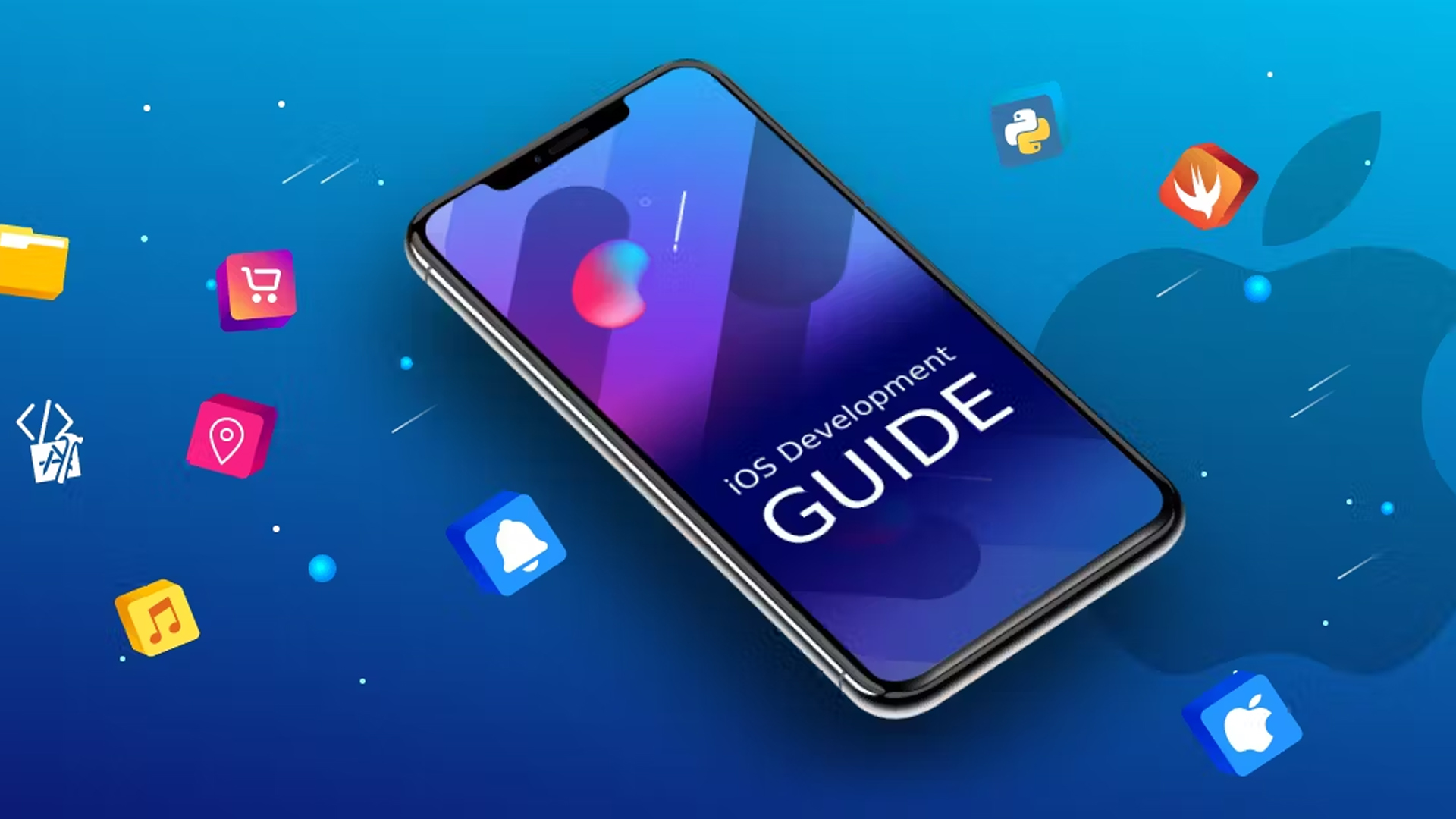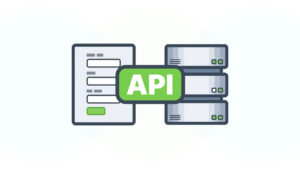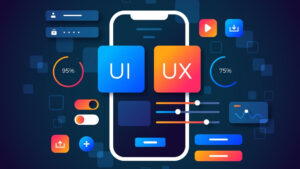In the ever-evolving digital landscape, mobile applications have become indispensable. And at the forefront of this revolution stands iOS, Apple’s powerful and intuitive operating system. Developing for iOS isn’t just about writing code; it’s about crafting experiences that resonate with millions of users worldwide. From seamless user interfaces to cutting-edge features, iOS apps set a high bar for quality and innovation.
This comprehensive guide will take you on a journey through the exciting world of iOS app development. Whether you’re a budding developer, an experienced professional looking to transition, or a business owner considering a mobile presence, this article will equip you with the knowledge and insights to navigate this dynamic field.
The Allure of iOS: Why Develop for Apple’s Ecosystem?
Before we dive into the technicalities, it’s crucial to understand why iOS remains a prime target for app development:
- Premium User Base: Apple users are often characterized by their willingness to invest in quality applications and in-app purchases, making it a lucrative market for developers.
- Unified Ecosystem: The tight integration between Apple hardware (iPhones, iPads, Apple Watches, Mac, Apple TV, Vision Pro) and software provides a consistent and optimized user experience, simplifying development and testing across devices.
- Strong Security and Privacy: Apple’s rigorous focus on user privacy and data security instills confidence in users and provides a robust environment for app operation.
- Higher Engagement and Retention: Due to Apple’s stringent App Store review process and emphasis on user experience, iOS apps often boast higher engagement rates and user retention compared to other platforms.
- Developer-Friendly Tools and Documentation: Apple provides a comprehensive suite of tools, frameworks, and extensive documentation, making it relatively easier for developers to get started and build sophisticated applications.
Laying the Foundation: Essential Prerequisites for iOS Development
Embarking on your iOS development journey requires a few fundamental ingredients:
- A Mac Computer: This is non-negotiable. Xcode, Apple’s Integrated Development Environment (IDE), runs exclusively on macOS. While there are some cross-platform solutions (which we’ll touch upon later), for native iOS development, a Mac is essential. Ensure it’s running the latest version of macOS for optimal compatibility with Xcode and SDKs.
- Xcode: This is your command center for iOS app development. Xcode is a free download from the Mac App Store and includes everything you need:
- iOS SDK (Software Development Kit): A collection of frameworks, APIs, and tools that enable you to build iOS applications.
- Interface Builder: A visual tool within Xcode to design your app’s user interface.
- Simulator: Allows you to test your app on various virtual iOS devices (different iPhone and iPad models, iOS versions) without needing physical hardware.
- Debugger: Tools to identify and fix issues in your code.
- Compilers: To translate your code into machine-readable instructions.
- Apple Developer Account: While you can develop and test apps on your Mac without one, you’ll need an active Apple Developer Program membership ($99 USD annual fee) to:
- Distribute your apps on the App Store.
- Access beta software and pre-release SDKs.
- Utilize advanced capabilities like iCloud, Push Notifications, and In-App Purchases.
- Test your apps on a physical device.
The Language of iOS: Swift vs. Objective-C
For decades, Objective-C was the primary language for iOS development. Derived from C, it’s an object-oriented language known for its flexibility. While many legacy apps still use Objective-C, Apple introduced Swift in 2014 as the modern, preferred language for its ecosystem.
- Swift:
- Modern and Intuitive: Designed to be safer, faster, and more expressive than Objective-C.
- Concise Syntax: Requires less code to achieve the same functionality, leading to clearer and more maintainable code.
- Performance: Optimized for speed and efficiency, delivering excellent app performance.
- Safety: Built with safety features to prevent common programming errors, reducing crashes and bugs.
- Active Community: A rapidly growing and supportive developer community.
For new projects, Swift is undeniably the recommended choice. However, understanding the basics of Objective-C can be beneficial if you need to work with older codebases or integrate with existing libraries.
Architectural Patterns: Structuring Your iOS App
A well-structured app is easier to develop, maintain, and scale. Common architectural patterns in iOS development include:
- MVC (Model-View-Controller): The traditional pattern, where the Model represents data and business logic, the View handles the user interface, and the Controller acts as an intermediary, managing communication between the Model and View. While widely used, it can sometimes lead to “Massive View Controllers” where controllers become too large and difficult to manage.
- MVVM (Model-View-ViewModel): An evolution of MVC, MVVM introduces a ViewModel layer that acts as an abstraction of the View, providing data and commands that the View can bind to. This improves testability and separates concerns more effectively.
- VIPER (View-Interactor-Presenter-Entity-Router): A more complex but highly modular pattern, VIPER emphasizes strict separation of concerns, making large-scale projects more manageable and testable.
- Clean Architecture: A broader architectural philosophy that emphasizes independent components, allowing for flexible and maintainable systems.
Choosing the right architectural pattern depends on your project’s complexity and team’s familiarity. For beginners, MVC or MVVM are good starting points.
The iOS App Development Lifecycle: From Idea to App Store
Developing an iOS app involves a systematic approach:
- Idea Generation & Market Research:
- Identify a problem to solve or a need to fulfill.
- Research your target audience, competitors, and market trends.
- Define your app’s unique selling proposition (USP).
- Planning & Wireframing:
- Outline your app’s features and functionalities.
- Create wireframes (low-fidelity visual representations) to define the app’s layout and user flow.
- Develop a clear sitemap and navigation structure.
- UI/UX Design:
- User Interface (UI): Focus on the visual elements users interact with (buttons, icons, typography, color schemes). Adhere to Apple’s Human Interface Guidelines (HIG) for a consistent and intuitive user experience.
- User Experience (UX): Ensure the app is easy to use, efficient, and enjoyable. Consider user journeys, accessibility, and responsiveness across different device sizes.
- Backend Development (if applicable):
- For apps requiring data storage, user authentication, or real-time communication, a backend is essential.
- Choose a suitable backend technology (e.g., Node.js, Python, Ruby on Rails, Firebase, AWS Amplify) and design your APIs for seamless communication with the iOS app.
- Native iOS Development:
- Setting up the Project: Create a new Xcode project and configure its settings.
- Coding with Swift/SwiftUI/UIKit:
- UIKit: The traditional framework for building iOS UIs, offering fine-grained control.
- SwiftUI: Apple’s declarative UI framework, introduced in 2019, allows you to build UIs with less code and provides excellent integration with Swift. It’s becoming the preferred choice for new projects.
- Implementing Features: Develop the core functionalities defined in your planning phase.
- Integrating APIs: Connect your app to the backend or third-party services.
- Data Persistence: Implement methods for storing and retrieving data locally on the device (e.g., Core Data, Realm, UserDefaults).
- Testing and Quality Assurance (QA):
- Unit Tests: Test individual components of your code.
- UI Tests: Automate testing of user interface interactions.
- Integration Tests: Verify that different modules of your app work together correctly.
- Performance Testing: Identify and resolve bottlenecks to ensure smooth operation.
- Memory Management: Use Xcode’s Instruments to detect memory leaks and optimize memory usage.
- Beta Testing with TestFlight: Distribute pre-release versions of your app to a group of testers to gather feedback and identify bugs in real-world scenarios.
- Deployment to the App Store:
- App Store Connect: Use this platform to manage your app’s metadata, screenshots, pricing, and distribution.
- App Review Process: Apple has a rigorous review process to ensure apps meet their guidelines for quality, performance, security, and content. Be prepared for potential rejections and iterate based on feedback.
- Release: Once approved, your app goes live on the App Store!
- Post-Launch: Updates and Maintenance:
- Monitor Performance: Track app crashes, user engagement, and other metrics.
- Gather Feedback: Listen to user reviews and suggestions.
- Regular Updates: Release updates to add new features, fix bugs, improve performance, and adapt to new iOS versions.
- Marketing and Promotion: Continue to promote your app to attract new users.
Key Technologies and Frameworks in iOS Development
Beyond Swift and Xcode, several other tools and frameworks are crucial:
- SwiftUI: The modern, declarative UI framework that simplifies UI development.
- UIKit: The foundational framework for building traditional iOS user interfaces.
- Foundation: Provides fundamental classes for data types, collections, and operating system services.
- Core Data: Apple’s framework for managing object graphs and persisting data.
- Realm: A popular alternative to Core Data for local database management.
- CloudKit: Apple’s framework for integrating with iCloud, offering cloud storage and synchronization.
- Firebase: Google’s comprehensive mobile development platform, offering backend services like authentication, database, and analytics.
- Alamofire: A popular Swift-based HTTP networking library for making network requests.
- RxSwift: A reactive programming framework that simplifies asynchronous code and event handling.
- TestFlight: Apple’s platform for beta testing your apps.
- CocoaPods/Swift Package Manager: Dependency managers for incorporating third-party libraries into your project.
- Git: Version control system essential for collaborative development.
Best Practices for Successful iOS App Development
To ensure your iOS app stands out, consider these best practices:
- Adhere to Human Interface Guidelines (HIG): This is paramount for creating an app that feels native and intuitive to iOS users.
- Prioritize Performance: Optimize code, manage memory efficiently, and implement lazy loading to ensure a smooth and responsive user experience.
- Focus on Security and Privacy: Implement secure data storage, use HTTPS for network communication, and adhere to Apple’s privacy guidelines.
- Embrace Accessibility: Design your app to be usable by everyone, including users with disabilities, by supporting features like VoiceOver and Dynamic Type.
- Write Clean and Maintainable Code: Follow coding standards, use descriptive variable names, and refactor regularly.
- Implement Robust Testing: Thoroughly test your app to identify and fix bugs before release.
- Plan for Updates and Iterations: The app market is dynamic; plan for continuous improvement and feature additions.
- Optimize for App Store Optimization (ASO): Use relevant keywords, compelling screenshots, and a clear description to improve your app’s visibility in the App Store.
- Monitor Analytics: Track user behavior and app performance to make data-driven decisions for future updates.
- Engage with the Developer Community: Participate in forums, attend conferences, and learn from other developers.
The Future of iOS App Development
The iOS ecosystem is constantly evolving, with exciting trends shaping its future:
- On-Device AI & Machine Learning (Core ML): Apple’s continued investment in Core ML enables developers to integrate powerful AI models directly into apps, leading to more personalized and intelligent experiences, often with enhanced privacy.
- Spatial Computing (visionOS): With the advent of Apple Vision Pro, spatial computing is a significant new frontier, opening up opportunities for immersive augmented and virtual reality experiences.
- Advanced Voice Interfaces and Conversational AI: Improvements in Siri and voice control are making voice a more integral part of the user interface, allowing for hands-free interactions and more natural user flows.
- Continued Evolution of Swift and SwiftUI: These native technologies will continue to be refined, offering more powerful and efficient ways to build apps across all Apple platforms.
- Enhanced Privacy and Security: Apple’s unwavering commitment to user privacy will drive further advancements in secure app development and data handling.
- Cross-Platform Development (with caveats): While native development remains king for optimal performance and user experience, cross-platform frameworks like React Native and Flutter continue to gain traction for certain use cases, especially for building apps that need to run on both iOS and Android with a single codebase. However, for a truly “Apple-feel” and access to the latest platform features, native iOS development is generally preferred.
- App Clips: These small, fast app experiences allow users to quickly access a specific feature of your app without downloading the full application.
Conclusion
iOS app development is a rewarding journey that combines technical skill with creative design. By understanding the core concepts, mastering the essential tools, and adhering to best practices, you can create compelling applications that delight users and achieve your development goals. The future of iOS development is bright, with ongoing innovations in AI, spatial computing, and user experience offering endless possibilities for those ready to craft the next generation of mobile experiences. So, grab your Mac, fire up Xcode, and start building your vision for the world’s most popular mobile platform. The App Store awaits!




